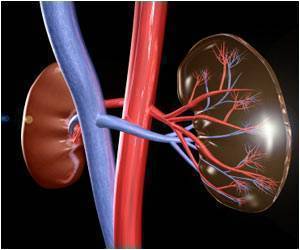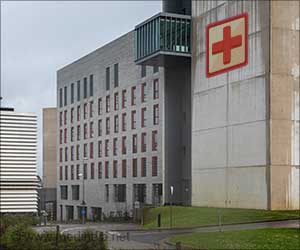An expanded Buffalo Neuroimaging Analysis Center, an internationally renowned research center of the University at Buffalo that works with clinicians and researchers around the world to advance the understanding of diseases of the brain, spinal cord and optic nerve, was unveiled today in Buffalo General Hospital.
The center is an arm of the Jacobs Neurological Institute, which is the Department of Neurology in the UB School of Medicine and Biomedical Sciences. It leases space in Buffalo General through a partnership with Kaleida Health, which invested $10 million in creating the new, larger space for the BNAC.The state-of-the-art, 10,000-square-foot renovated space was sealed off for the past 30 years; it formerly housed an incinerator and animal research facilities and had become home to pigeons. The architectural firm Smith + Accordo Architects of Rochester developed the plan for the dramatic transformation of the space.
The BNAC is headed by Robert Zivadinov, M.D., Ph.D., a leader in the field of neuroimaging and UB associate professor of neurology. Zivadinov will lead one of two imaging sessions at ECTRIMS, the most prestigious international conference dedicated to the research of multiple sclerosis, to be held next month in Prague, Czech Republic.
The center, Zivadinov explained at a press conference to unveil the expanded center, "strives to extend the boundaries of current knowledge about neurological diseases and disorders through innovative research techniques and the application of the most advanced bioinformatics resources.
"These state-of-the art expanded facilities will allow us to provide important new information on multiple sclerosis, Parkinson's disease and other devastating neurological conditions that we hope will be of great benefit to patients," he said.
The major work of the BNAC involves storing, manipulating and extracting useful information from tens of thousands of high-resolution three- and four-dimensional magnetic resonance imaging (MRI) measures of the brain, spinal cord and optic nerve for research studies, clinical trials and individual patient analyses.
Advertisement
The BNAC is affiliated with more than a dozen institutions, nationally and internationally, and has participated in more than $8 million in research projects involving international collaboration with a variety of clinicians and scientists. The center is world-renowned for its advances in MRI research and publications.
Advertisement
This internal network is connected through secure tunnels and multiple firewalls to MRI centers worldwide, allowing the BNAC to receive MRI studies from centers around the world and analyze them moments after they arrive.
Local MRI scans are performed on state-of-the-art, General Electric 1.5 and 3.0 Tesla MRI machines at the new Buffalo Niagara MRI Center, also located in Buffalo General Hospital. The BNAC is one of the few centers in the United States designated as a General Electric Research Partner, which allows the center to run conventional and non-conventional sequences on the MRI machines for research protocols and for individual clinical studies.
Technical and research personnel manning the center include two imaging directors, three certified clinical neuroimagers, four physician neuroimagers and database managers, seven research assistants, a chief research assistant, two MRI physicists, a systems administrator, two computer scientists, a study coordinator and a biostatistician. External consultants support the BNAC in a variety of different fields.
A cornerstone of the BNAC approach is the conviction that quantitative MRI measures can and should be used by physicians to aid in diagnosis/prognosis and in decisions regarding disease-modifying therapy. In the field of multiple sclerosis in particular, the BNAC has identified four quantitative MRI variables that are reliable markers of disease progression, and is creating individual quantitative MRI reports on a daily basis. Quantitative analysis allows for the detection of very small changes in disease progression that cannot be observed clinically.
SOURCE: UB-News Service
VEN/C





